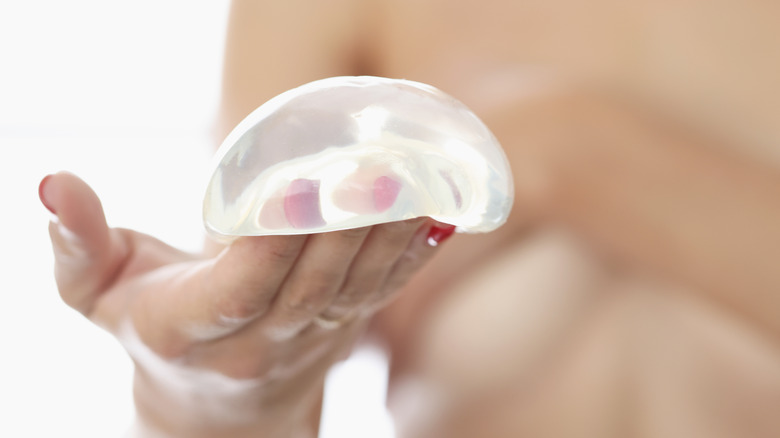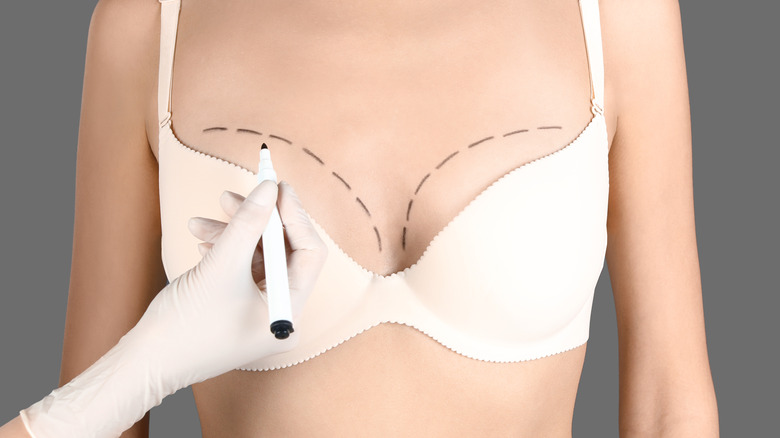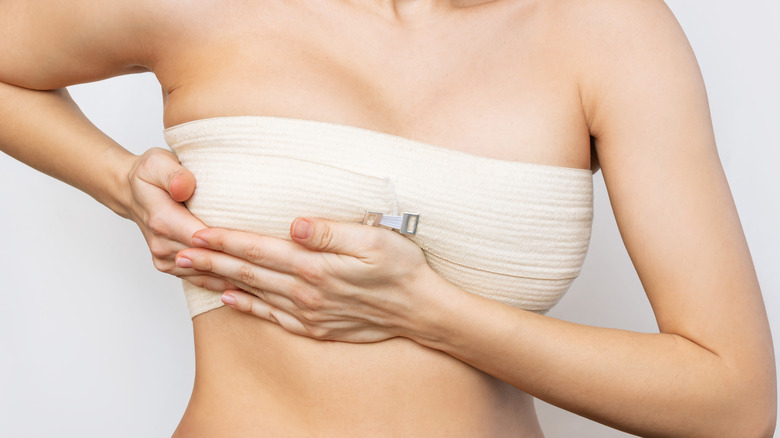Things You Need To Know Before You Get Breast Implants
Breast implants have remained one of the top requested types of plastic surgery for decades. Even before silicone breast implants came about — and the risks that come with them — women were seeking ways to enlarge their breasts. This occurred as far back as the early 1960s when substances like glycerin, ox cartilage, fat, and even snake venom were used to give women the appearance they wanted (via National Library of Medicine).
Although the invention of silicone implants was definitely a big step up from ox cartilage and, obviously, snake venom, they still weren't without their issues. In fact, about 10% of those with breast implants will experience a rupture in the outer silicone shell of the implants within a decade of the initial surgery, according to the Journal of the American Society of Plastic Surgeons.
But while implant rupturing should definitely be something everyone who wants breast implants should keep in mind, it's still not the only thing you need to know before strolling on up to a plastic surgeon's office with a wad of cash.
It's important to do your own research first
Before you even think about heading to a plastic surgery clinic, know what you want. The three most important things to include in your research are what type of implant you want, what size is best for your frame, and possible scarring.
"Not all breast implants are the same," Sientra's VP of marketing Lisa Rosas told Glamour. You have two options: saline or silicone gel. Although silicone looks and feels more like natural breasts, you do run the risk of it leaking and causing hard lumps. Saline is safer because if the shell does rupture, the saline naturally absorbs into the body, without leaving behind lumps and misshapen breasts.
When it comes to the right size — although the gigantic beach ball breasts of decades past are now considered out of date — it's ultimately your decision.
As for scarring, this comes down to the type of incision the surgeon uses: transaxillary, inframammary, areolar, and trans-umbilical breast augmentation (TUBA). The transaxillary requires an incision under each armpit, inframammary involves an incision under the breast, areolar is when the surgeon makes the incision on your — you guessed it — areola, and with TUBA the incision is made around your navel (via American Society of Plastic Surgeons). Although the scarring is minimal, it doesn't mean it's invisible.
The cost — financial and otherwise
The cost of implants is far from cheap and if it's done for aesthetic/cosmetic reasons, you're not likely to find an insurance company that will cover the surgery.
According to the American Society of Plastic Surgeons, breast implants will set you back about $4500. That doesn't include necessary extras like anesthesia, tests, X-rays, operating room fees, hospital stay, and other expenses. And the chances of that being your only surgery are very unlikely.
Even if the implant never ruptures, like most things, breast implants have a shelf life and are not intended to be "lifetime devices." In other words, they require upkeep and will need to be replaced roughly every 10 years or so — another surgery that insurance won't cover. Should you decide you want the implants removed at any point, that will cost you about $3000 — but, again, that's just for the surgery and not any other related expenses (via American Society of Plastic Surgeons).
There's also downtime to consider. Patients are typically able to go back to their jobs within a week or so, reported Cosmopolitan. But the recovery process can take a few weeks and many surgeons recommend that you wear a sports bra 24/7 for about three months, per the National Health Service UK. However, recovery time is different for everyone.
Plastic surgery is a personal decision, but it's also not something to do on a whim. If you're considering a boob job, think about everything it involves — not just how you'll look — before you commit.


